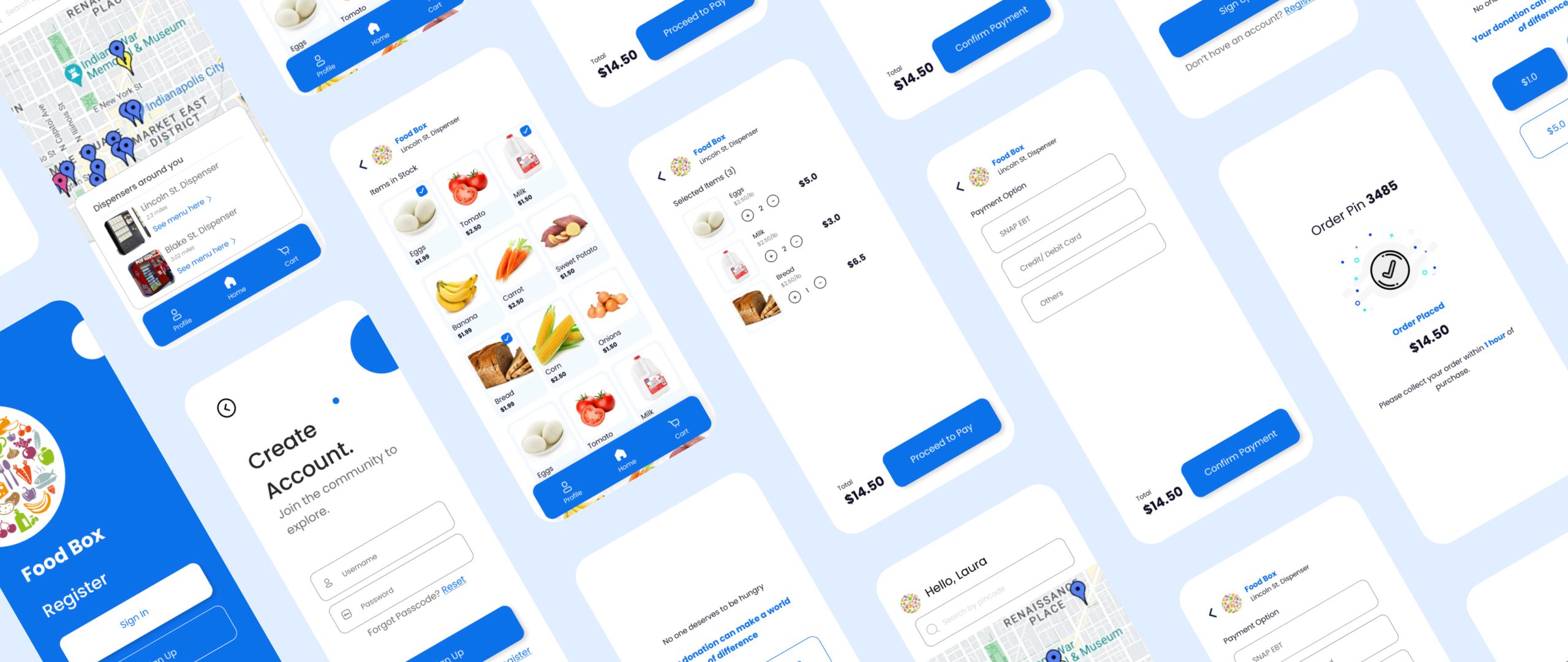
Released 2 versions so that native users aren't overwheled by so many changes.
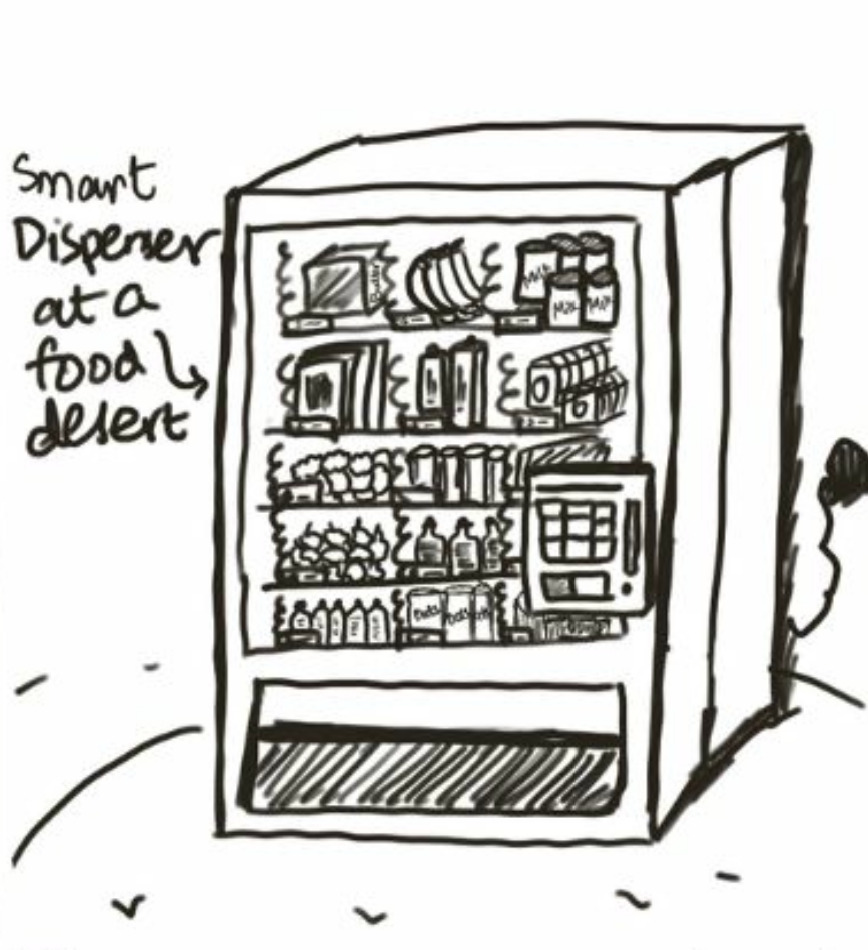
Vending Machine to help SNAP and EBT households with basic food needs in a food desert, which reduces food insecurity.
User Research
Design Strategy
Myself & 3 UX Designers
8 Weeks
User Research
Product Design
Service Design
User Interview
Dot Voting
Crazy 8
Storyboarding

Food insecurity is a growing issue in Indiana, affecting a significant portion of the population. 1 in 5 people live in a food desert. Our vending machine will be placed in food deserts with nutritious food and accept food stamps.
Research findings reveal that an accessible spot (gas station) with nutritious food would cater to the major needs of the population. Eating the right food in low quantity also meets daily nutritious needs. The dignified shopping experience for SNAP users and, the stigma of using food stamps in grocery stores is busted.
food insecure person living in a food desert/ food swamp
I want
access to nutritious food
So that
I can have a better lifestyle than what I currently have
But
the food banks and the food pantries only have canned or preserved food that is high in sodium.
Desk Research
User Interview
Empathy Mapping
User Persona
Crazy 8
Storyboarding
SWOT
High-fidelity mockup
Business Viability
User Feedback
Desk Research
To clearly understand the problem we are solving we went through numerous articles to get a grasp of the SNAP program and publications to learn from the existing solutions. To find the right material on the web, we have been trained by librarians to do effective web searches.
As part of desk research, we did environment analysis and individually looked at each contributing force.
I interviewed a SNAP beneficiary, who is currently a part-time undergraduate student. Besides this, we interviewed a university employee who was a SNAP recipient. Additionally, we also conducted interviews with stakeholders from food banks who work closely with SNAP recipients and nutritionists to understand the nutrition needs of these users.
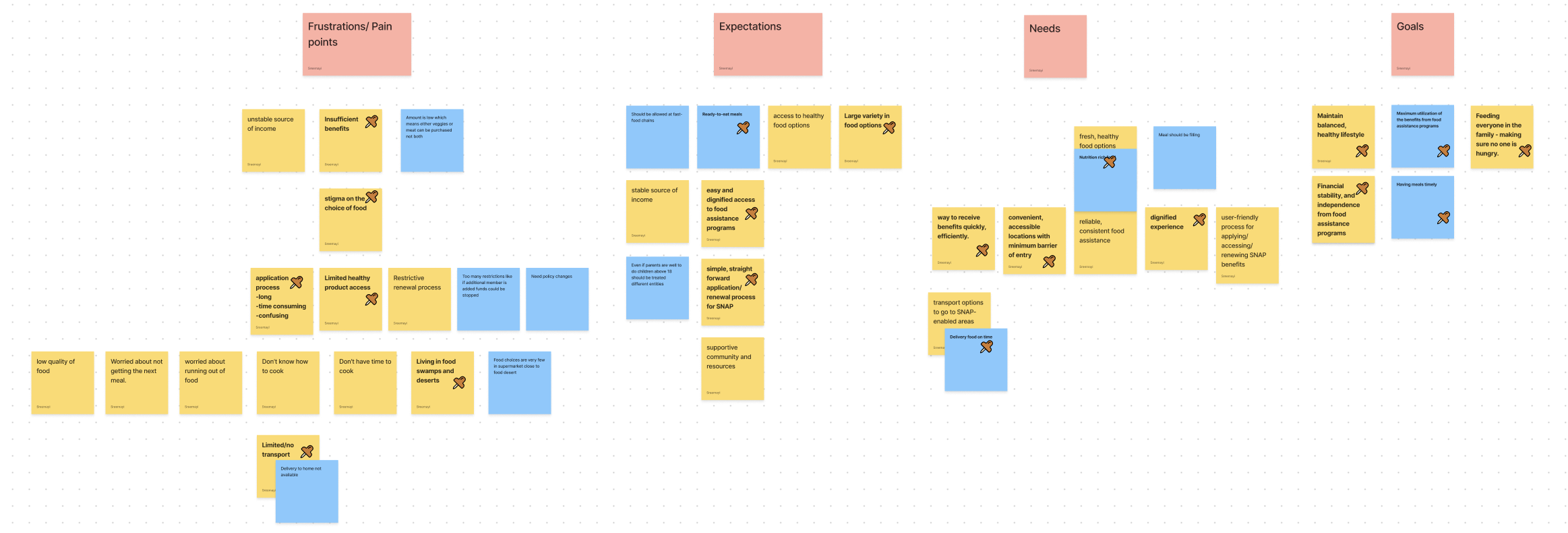
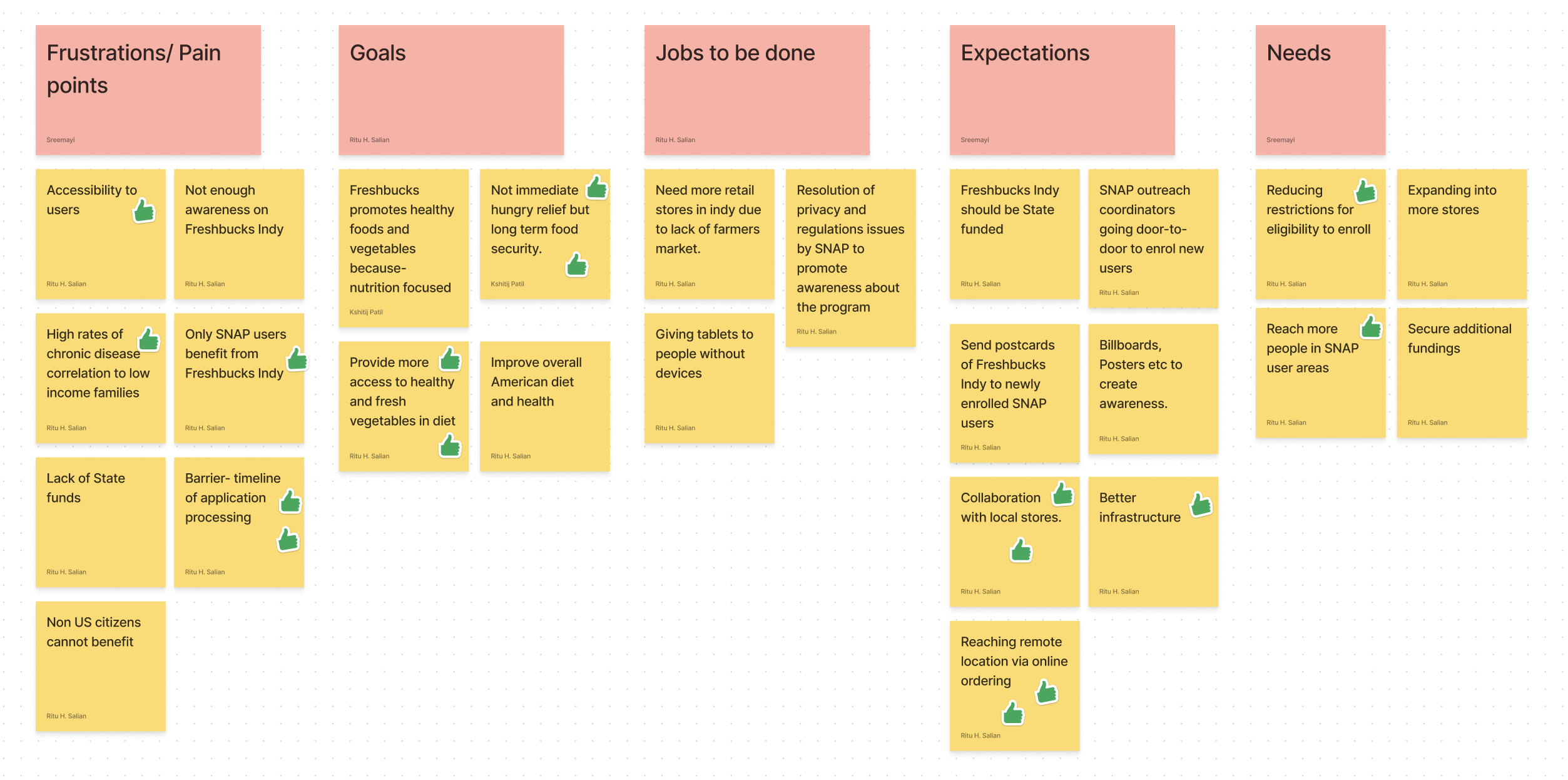
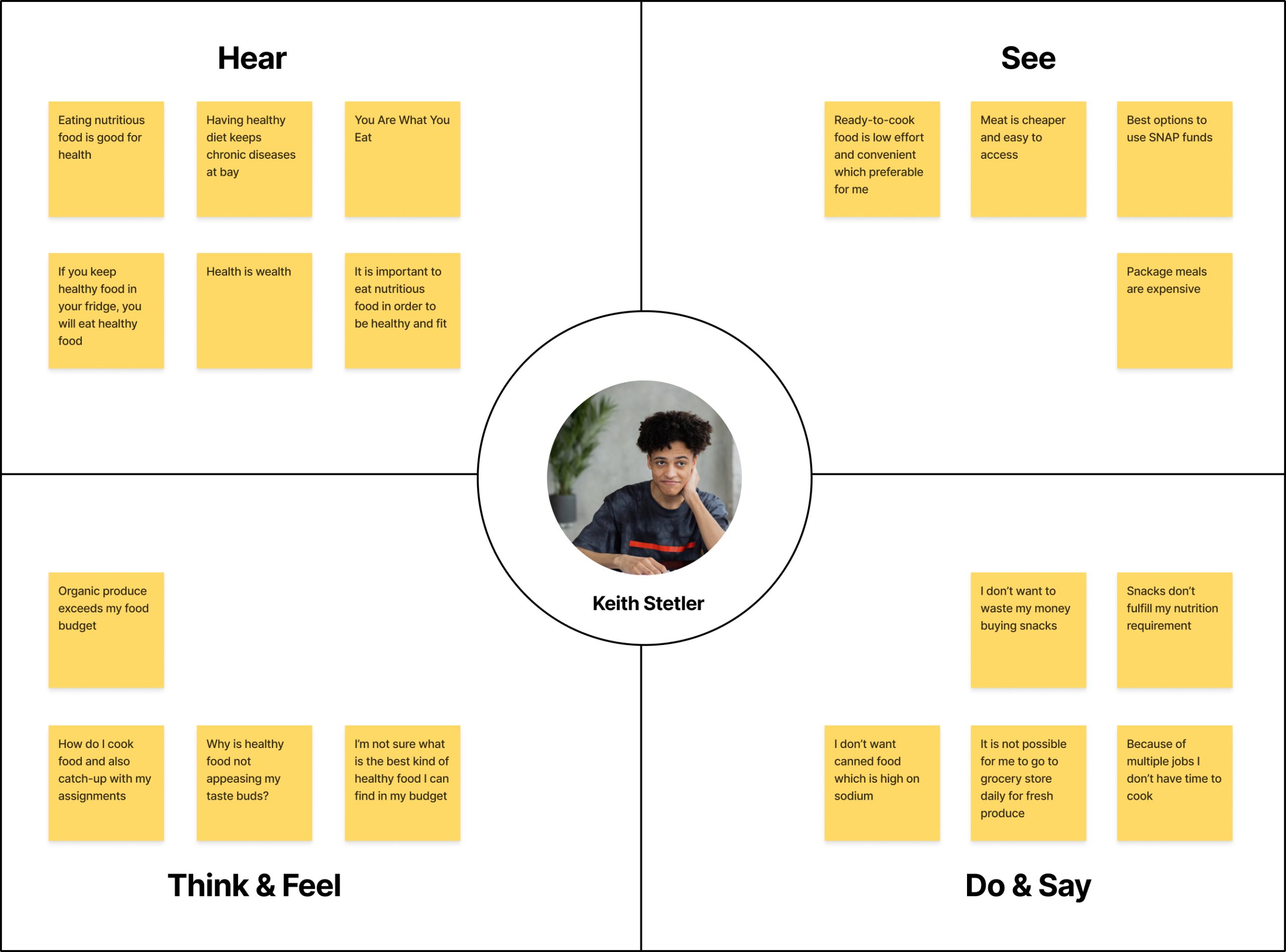





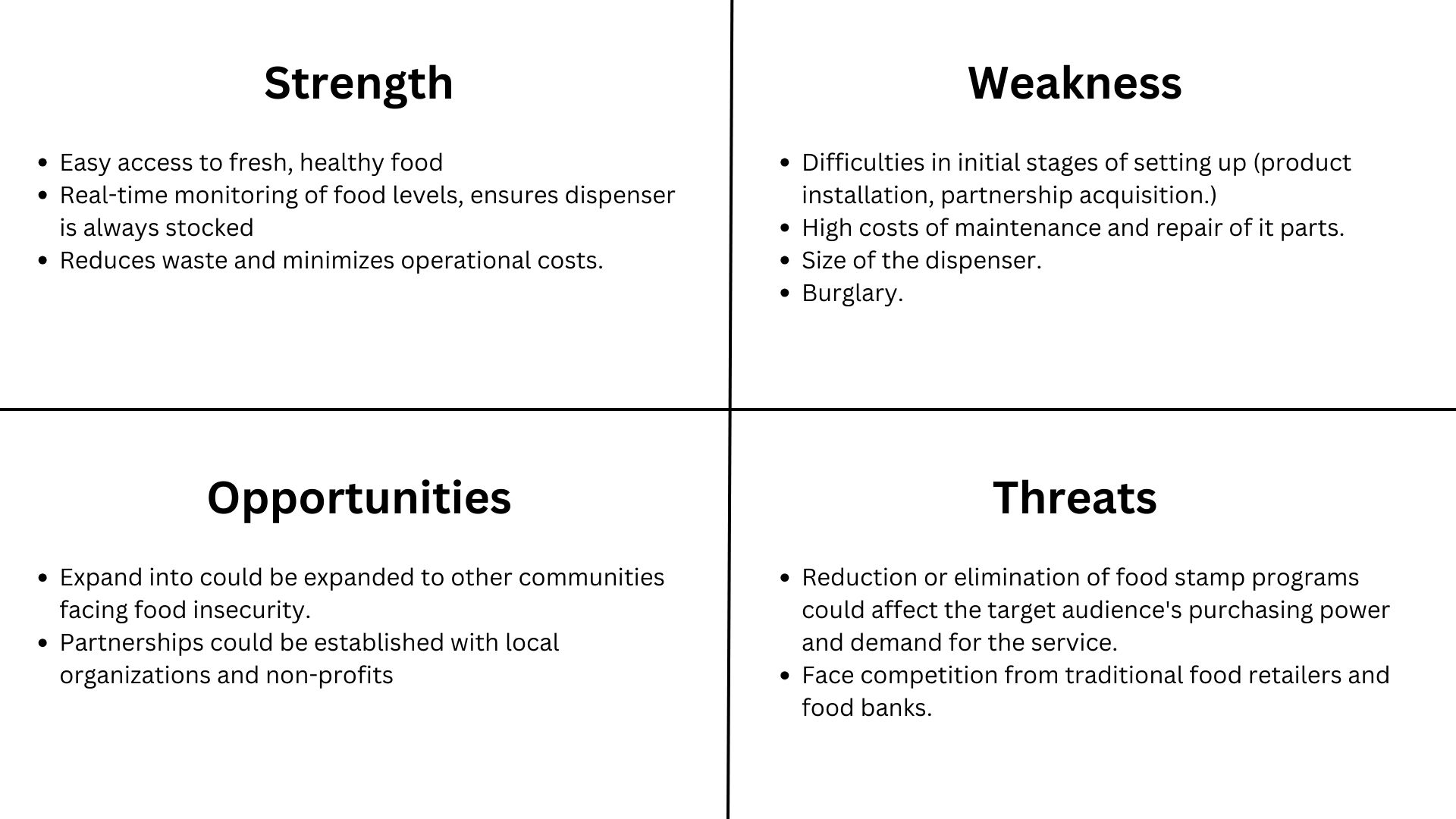
Low maintenance costs: With minimal overhead costs from leasing the smart dispensers, the only expenses we now incur are food supplies and operational costs.
Scalability: Easy to scale up and replicate to serve larger communities.
Humanizing technology, one pixel at a time.
Connect with Ikshita